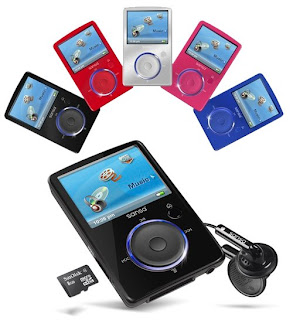
Remember that teenage trick of sticking your fingers in your ears and saying, "I can't hear you"? That's how I felt on Thursday morning when I talked to Adam Sohn, the marketing director for Zune.
I don't mean that Microsoft is oblivious to reality: Sohn admitted that the latest Zune sales figures were bad (though apparently in line with Microsoft's very low expectations) and that the company would prefer to be selling millions of the things instead of having them pile up in warehouses. It's more like Microsoft doesn't care what the world thinks.
Despite calls from me and other bloggers for Microsoft to stop making standalone digital-media players--and maybe focus on its increasingly embattled Windows Mobile platform instead--Sohn insisted that as long as anybody else (read: Apple) is selling lots of standalone digital-media players, proving that there is a market for them, then Microsoft is going to keep trying.
Without getting into details, Sohn promised that there will be new Zunes before the 2009 holiday season and that they'll be a surprising step up from the current models.
The conversation eventually moved into other ways Microsoft could benefit from the Zune platform--integration with Xbox and Media Center, reselling it to cell carriers for their own music and video stores--but I kept wondering what Microsoft could be planning for next year.
A touch-screen Zune? Apple did that in 2007. Games? Apple's advertising the heck out of games for iPod Touch now. Some sort of whizzy communciations application, like voice communications in Wi-Fi hot spots using Windows Live Messenger IDs? (I'm reaching now, plus the mobile carriers--to whom Microsoft is trying to sell Windows Mobile--would freak.)
How about a built-in Zune Pass subscription, giving you unlimited music streaming and some number of permanent downloads for the first year or two? That idea doesn't seem to be working so well for Nokia, but Microsoft wouldn't have to rely on cell phone carriers (which have their own services) to push it.
Seriously. What, if anything, would convince you to buy a Zune next year?










 Rhapsody: Similar to Napster in most respects, Rhapsody offers a catalog of more than 4.5 million DRM-free MP3s. It's chock-full of preprogammed playlists made by editors and other listeners and includes an innovative radio feature called Channels, some of which are offered up for free listening. Rhapsody is the only service that allows full track previews (up to 25 per month) prior to purchasing the songs. It can be accessed directly on the Web or downloaded as a jukebox (for Windows only) and offers a subscription plan as well.
Rhapsody: Similar to Napster in most respects, Rhapsody offers a catalog of more than 4.5 million DRM-free MP3s. It's chock-full of preprogammed playlists made by editors and other listeners and includes an innovative radio feature called Channels, some of which are offered up for free listening. Rhapsody is the only service that allows full track previews (up to 25 per month) prior to purchasing the songs. It can be accessed directly on the Web or downloaded as a jukebox (for Windows only) and offers a subscription plan as well.








 Thanks to its position as a memory chip manufacturer, SanDisk is a master at cost competing in the portable audio space. The Sansa Clip is the perfect example of this mastery.
Thanks to its position as a memory chip manufacturer, SanDisk is a master at cost competing in the portable audio space. The Sansa Clip is the perfect example of this mastery.



























